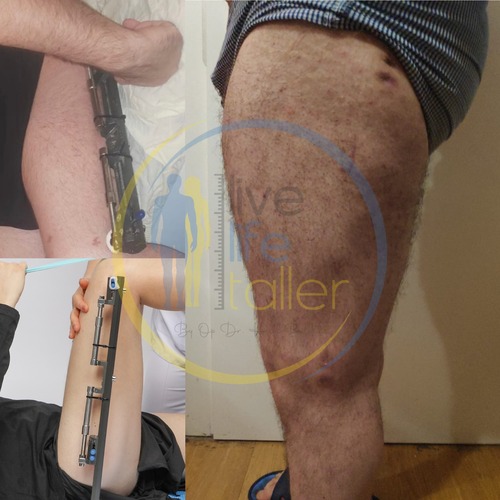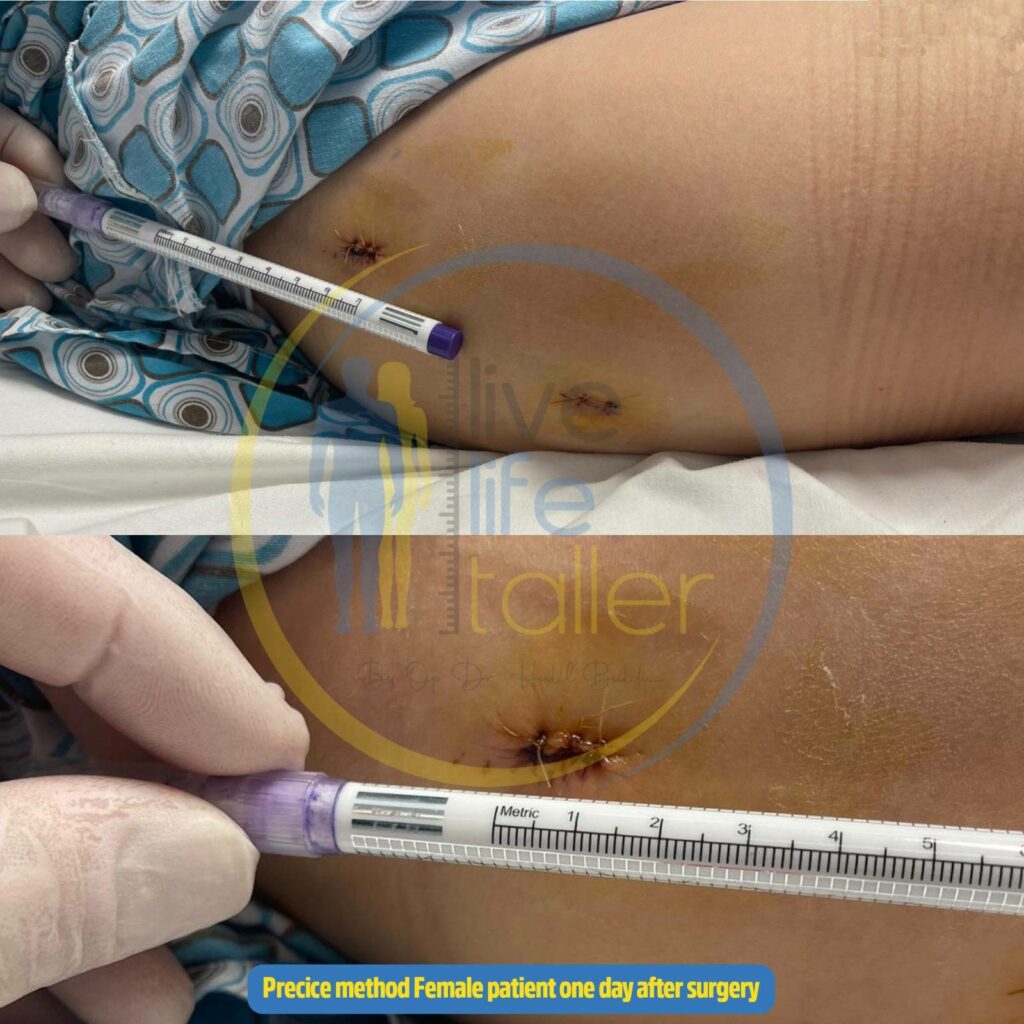
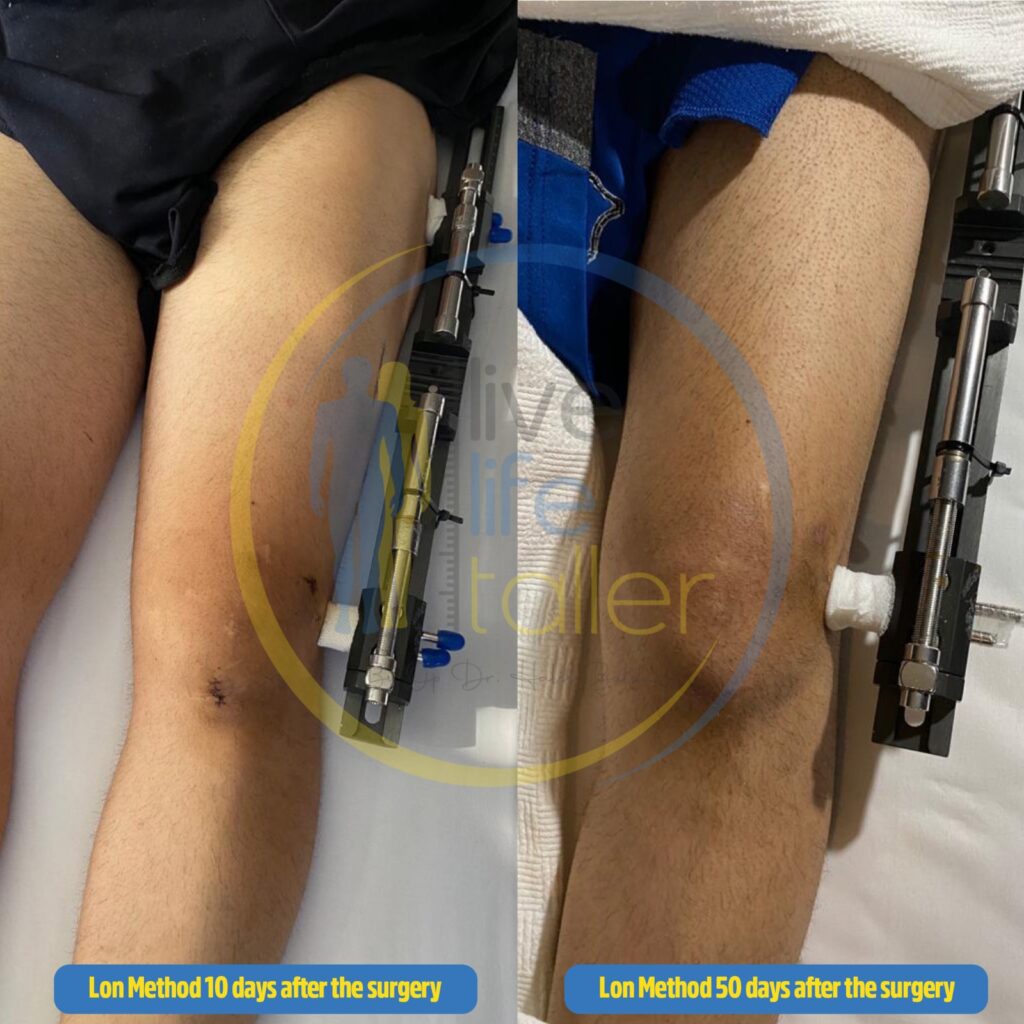
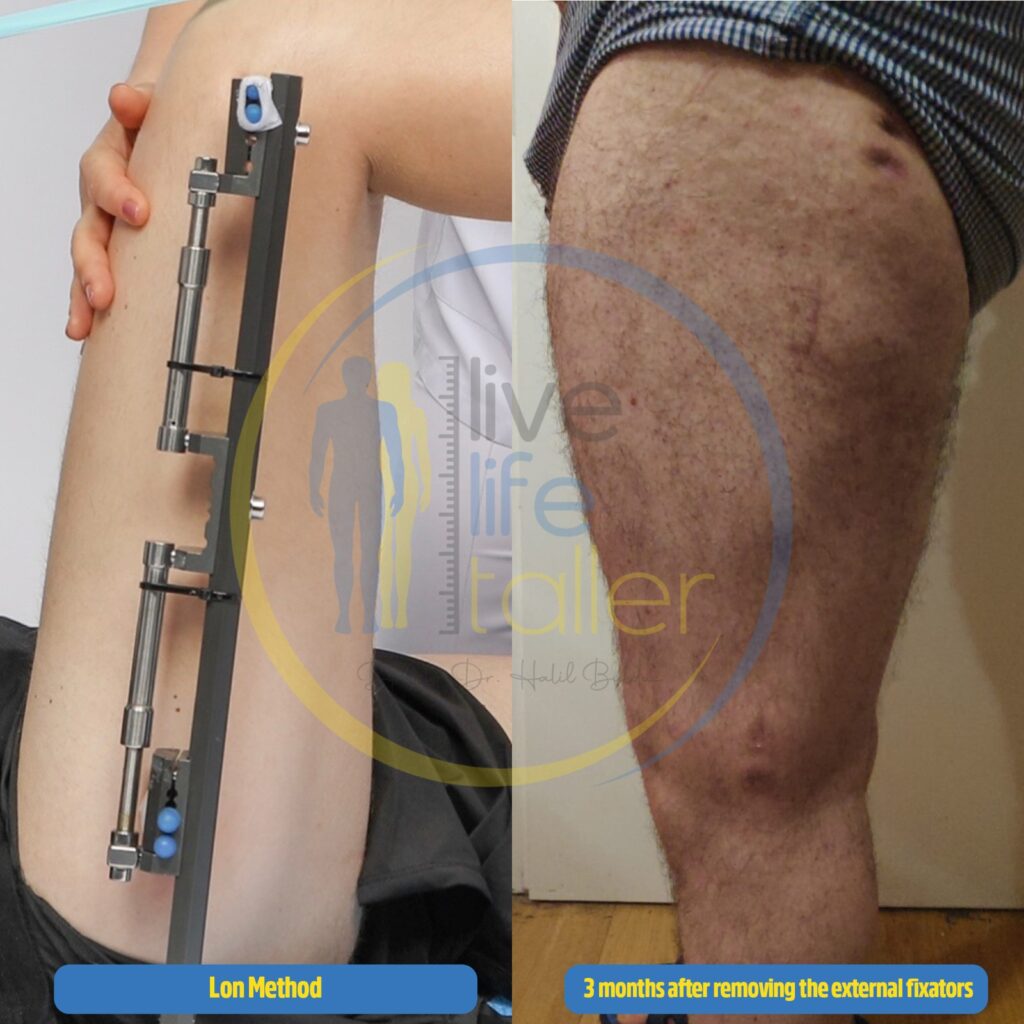
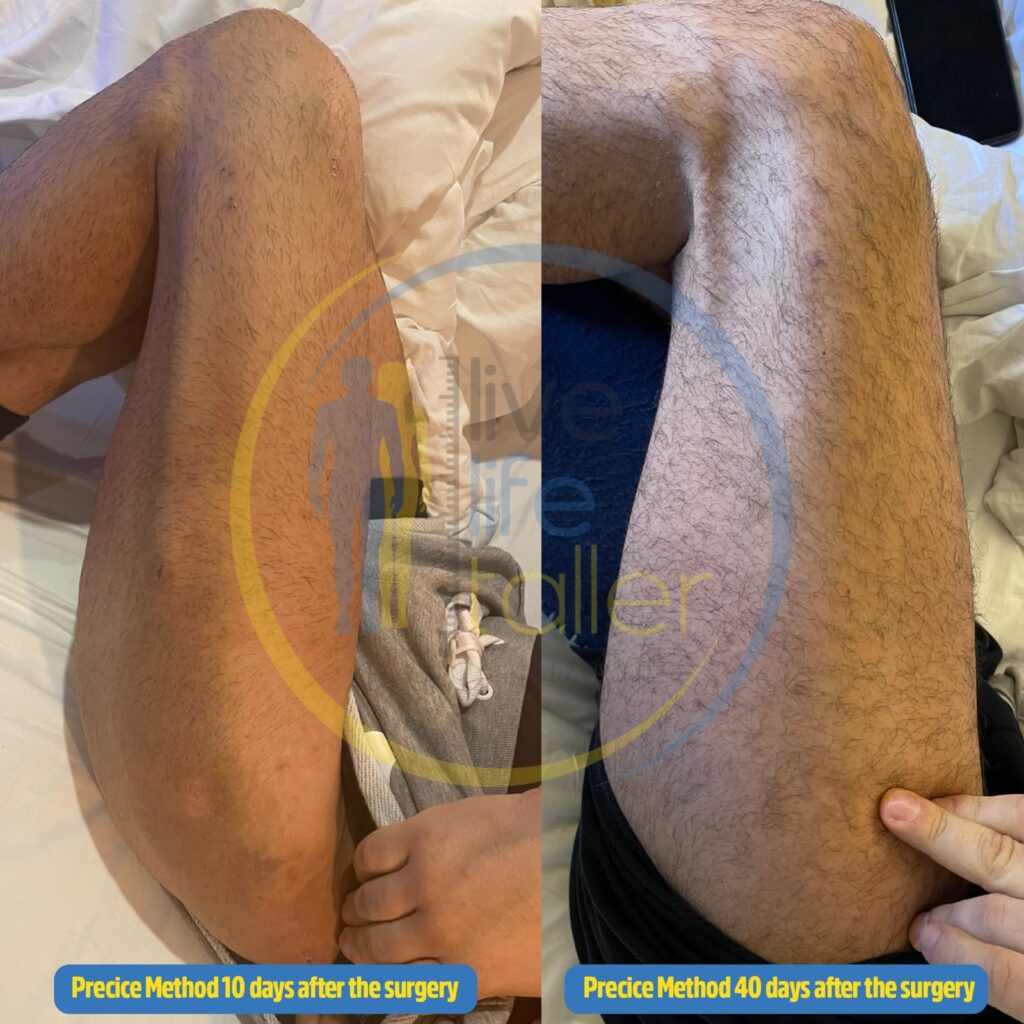
Table of Contents
ToggleScars After Limb Lengthening Surgery: An In-Depth Guide
Limb lengthening surgery is a life-changing procedure for many individuals, providing enhanced mobility and an increase in height. However, one of the most common concerns is the potential for limb lengthening scars. Understanding how these scars form, the factors influencing them, and methods to reduce their visibility can help improve the overall aesthetic results. In this guide, we will explore various strategies for scar minimisation and provide essential tips for postoperative care.
What Kind of Scars Are Expected After Limb Lengthening Surgery?
During limb lengthening surgery, incisions are made to insert external or internal devices, such as fixators or rods, to facilitate bone growth. These incisions result in limb lengthening surgery scars. Typically, these scars appear as small linear marks at the entry points of the surgical instruments and along the areas where devices are attached. They can vary in size and intensity depending on the surgical approach used and the patient's healing ability. Most often, these scars heal into fine lines but may initially appear red or raised.
The exact appearance of the scars also depends on individual factors such as skin type, genetics, and how the body reacts to surgery. Although some scars can fade with time, many patients seek additional methods to reduce the visibility of these leg lengthening surgery scars.
Is It Possible To Minimise Scars After Limb Lengthening Surgery?
Yes, it is possible to minimise the appearance of leg lengthening scars with proper planning and postoperative care. Surgeons who specialise in cosmetic results often adopt minimally invasive techniques to reduce the size of incisions. Additionally, there are several strategies that can be implemented before, during, and after surgery to help reduce scarring.
Patients should be proactive in discussing their concerns about scarring with their surgeon prior to the procedure. This ensures that the surgeon takes all necessary steps to limit scar formation. Following strict aftercare routines and utilising advanced treatments post-surgery are also vital to minimising limb lengthening surgery scars.
Preoperative Preparations To Minimise Scars After Limb Lengthening Surgery
Preoperative care plays a significant role in scar minimisation. Patients should focus on preparing their skin by maintaining hydration and avoiding excessive sun exposure before surgery. Nutritional factors, such as a diet rich in vitamins A, C, and E, can support the body’s healing process and skin regeneration, which will positively impact how limb lengthening scars form.
Additionally, smokers should stop smoking well in advance of surgery, as tobacco use impairs blood circulation, leading to delayed wound healing and more pronounced scarring. By entering surgery with healthy, well-prepared skin, patients can significantly improve their chances of developing less visible scars.
Postoperative Basic Care Techniques For Scar Minimisation After Lengthening
Once the surgery is completed, following basic postoperative care guidelines is crucial in reducing the prominence of leg lengthening surgery scars. Keeping the surgical wounds clean and covered during the initial healing phase prevents infections, which can lead to more severe scarring. Patients are often advised to apply prescribed ointments and moisturisers that promote skin healing.
Avoiding direct sunlight on healing scars is important to prevent hyperpigmentation, a condition where scars become darker and more noticeable. The use of silicone sheets or gels is a popular method to flatten and lighten scars, making them less visible over time.
Final Scar Treatments After Limb Lengthening Surgery
In addition to basic wound care, there are more advanced treatments available to improve the appearance of limb lengthening scars. Once the initial healing phase is over, patients can explore options like laser therapy, micro-needling, or chemical peels, all of which can help diminish scar visibility. These treatments target the skin’s deeper layers, encouraging collagen production and reducing the raised or red appearance of scars.
Innovative Scar Management Strategies After Limb Lengthening
Scar management continues to evolve with new, innovative treatments available to those seeking improved cosmetic outcomes after limb lengthening surgery. Laser treatments, such as fractional CO2 laser, are highly effective in reducing scar thickness and redness. Micro-needling combined with platelet-rich plasma (PRP) therapy has also shown promising results in promoting skin repair and scar reduction.
By combining traditional care with these cutting-edge techniques, patients can significantly reduce the appearance of leg lengthening surgery scars and achieve smoother, more aesthetically pleasing results.
For more insights into post-surgery scar treatments and patient experiences, you can watch this informative video:
Watch Video on Scar Management After Limb Lengthening Surgery
Scar Healing Timeline After Limb Lengthening Surgery
The healing process for limb lengthening surgery scars takes time and occurs in multiple stages. Immediately after surgery, scars may be red, raised, or tender. Within a few weeks, they begin to flatten and fade, although the full healing process can take several months to over a year.
Factors such as age, skin type, and how well postoperative care instructions are followed can affect this timeline. It is important for patients to be patient and consistent with their scar care routine, as visible improvements often happen gradually.
Factors Affecting Wound Healing After Limb Lengthening
Several factors can influence how well limb lengthening scars heal. Genetics, for example, play a significant role, as some individuals are predisposed to keloid or hypertrophic scarring, where the skin forms raised, thick scars. Other factors include the patient’s overall health, nutrition, and adherence to wound care protocols. Regular monitoring and early intervention in case of complications can ensure the best possible outcomes.
Addressing The Psychological Effects Of Scars Resulting From Limb Lengthening Surgery
For some patients, leg lengthening scars can have a psychological impact, particularly if the scars are more noticeable than anticipated. Addressing these emotional concerns is important, as confidence and body image can be affected. Many find that treatments to reduce scarring also improve their emotional well-being. Speaking with a counselor or joining support groups can be helpful steps toward coping with the changes.
Choosing The Right Surgeon For Minimal Scarring In Limb Lengthening Surgery
Choosing a highly skilled surgeon is one of the most critical factors in reducing the visibility of limb lengthening surgery scars. Surgeons with extensive experience in cosmetic surgery techniques are more likely to use methods that minimise scarring and ensure a more aesthetically pleasing outcome.
Criteria For Choosing A Surgeon Specialised In Limb Lengthening With A Focus On Scar Reduction
When selecting a surgeon for limb lengthening surgery, patients should consider several criteria, including the surgeon’s expertise in scar reduction. Looking for board certification, years of experience in the field, and reviews from previous patients can provide insights into the surgeon’s ability to achieve minimal scarring. Additionally, discussing the surgeon’s approach to scar prevention and postoperative care is essential in making an informed decision.

